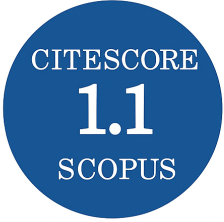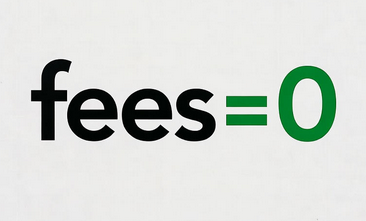Using Aviation Simulation Technologies for Pilot Modelling and Flight Training Assessment
DOI:
https://doi.org/10.3849/aimt.01179Keywords:
flight simulators, simulation technologies, pilot training, pilot modelling, human behaviour model, MATLABAbstract
This paper summarises many years of the results of the development and modelling of human behaviour while flying an aircraft, from a flight automation point of view. The introduction presents the challenges of describing and modelling human behaviour. Based on that knowledge, options for acquiring parameters for a pilot behaviour model are described. Then, analysis of pilot response is presented, acquired from many tests on two simulators (stationary and motion‐platform). These experimental tests are pilot responses to a visual stimulus and also partially to motion stimulus – step change in flight altitude where the task of the pilot is to return the flight, as quickly as possible to the original flight altitude. Due to the vast amount of test data files – missions from each test – the authors rewrote the identification algorithms for batch data processing and utilised a Salamon supercomputer located at Technical University of Ostrava. In the first phase of implementation of the identification algorithms, the calculations were 4 times faster, and after rewriting the algorithms for parallel calculations, the authors expect the speed to increase more than 10 times.
References
FOYLE, D. C., HOOEY, B. L., et. all Human Performance Models of Pilot Behavior, in Proceedings of the Human Factors and Ergonomics Society Annual Meeting, 2005, vol. 49, pp. 1109–1113.
ALLERTON, D. J. The Impact of Flight Simulation in Aerospace, The Aeronautical Journal, vol. 114, no. 1162, pp. 747–756, 2010.
BORIL, J. Analysis of Pilot-Aircraft Mechatronic System in View of Automatic Control Systems (in Czech), Doctoral Thesis, University of Defence, 2013.
JIRGL, M. Analysis of Pilot’s Behaviour Models during Flight (in Czech), Doctoral Thesis, Brno University of Technology, 2016.
RASMUSSEN, J. Information Processing and Human-Machine Interaction: An Approach to Cognitive Engineering. New York: North-Holland: Elsevier Science Ltd, 1986.
McRUER, D. T. ,KRENDEL E. S. Mathematical Models of Human Pilot Behavior. London: AGARD AG-188, 1974.
HAVLIKOVA, M., BRADAC, Z., SEDIVA, S., JIRGL, M. A man as the regulator, Advances in Electrical and Electronic Engineering , vol. 12, no. 5, pp. 469–475, 2014.
McRUER, D.T. , KRENDEL E. S. Human Pilot Dynamics in Compensatory systems. USA: Air Force Flight Dynamics Laboratory, Research and Technology Division, Air Force Systems Command, United States Air Force, 1965.
LONE, M., COOKE, A. Review of pilot models used in aircraft flight dynamics, Aerospace Science and Technology, vol. 34, no. 1, pp. 55–74, 2014.
SZABOLCI, R., Pilot in the Loop Problem and Its Solution, Technical Sciences and Applied Mathematics, vol. 1–2009, pp. 12–22, 2009.
BORIL, J., JALOVECKY, R., ALI, R. Human - Machine Interaction and Simulation Models Used in Aviation, in MECHATRONIKA, 2012 15th International Symposium, 2012, pp. 1–4.
JIRGL, M., HAVLIKOVA, M., BRADAC, Z. The Dynamic Pilot Behavioral Models, Procedia Engineering, vol. 100, pp. 1192–1197, 2015.
LONE, M., RUSENO, N., COOKE, A. K. Towards understanding effects of non-linear flight control system elements on inexperienced pilots, The Aeronautical Journal, vol. 116, no. 1185, pp. 1201–1206, 2012.
QINGLING, L., TAN, X., LONE, M. Towards the design of a pilot-induced oscillation detection and mitigation scheme, in AIAA Atmospheric Flight Mechanics (AFM) Conference, 2013, no. 5, pp. 1–19.
JIRGL, M., JALOVECKY R., BRADAC, Z. Models of pilot behavior and their use to evaluate the state of pilot training, Journal of Electrical Engineering, vol. 67, no. 4, pp. 267–272, 2016.
JIRGL, M., JALOVECKY, R. Modelling and Simulation of Longitudinal Flight, in Proceedings of the 16th International Conference on Mechatronics – Mechatronika 2014, 2014, pp. 228–233.
FOSSEN, T. I. Mathematical Models for Control of Aircraft and Satellites 2nd ed. Department of Engineering Cybernetics, NTNU, 2011.
Downloads
Published
License
Copyright (c) 2017 Advances in Military Technology

This work is licensed under a Creative Commons Attribution-NonCommercial 4.0 International License.
Authors who publish with this journal agree to the following terms:
1. Authors retain copyright and grant the journal right of first publication with the work simultaneously licensed under a Creative Commons Attribution License that allows others to share the work with an acknowledgement of the work's authorship and initial publication in this journal.
2. Authors are able to enter into separate, additional contractual arrangements for the non-exclusive distribution of the journal's published version of the work (e.g., post it to an institutional repository or publish it in a book), with an acknowledgement of its initial publication in this journal.
3. Authors are permitted and encouraged to post their work online (e.g., in institutional repositories or on their website) prior to and during the submission process, as it can lead to productive exchanges, as well as earlier and greater citation of published work.
Users can use, reuse and build upon the material published in the journal for any purpose, even commercially.






